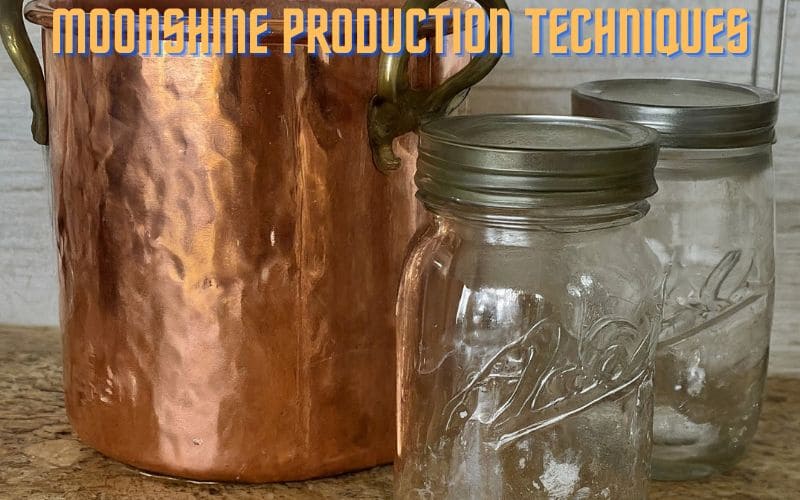Moonshine Production Techniques: Four Methods To Make Moonshine

Introduction
Welcome to the world of moonshine! Today, we’ll explore the fascinating art of moonshine production, uncovering the secrets behind this traditional craft. Learn about the different methods used to create moonshine and the historical significance of this spirited brew.
Corn Mash Recipe
Overview
When it comes to the production of moonshine, the role of corn mash cannot be overstated. It serves as the foundational ingredient in the entire process, playing a pivotal role in kickstarting the conversion of grains into alcohol. Understanding the intricate details of this fundamental stage is crucial for creating high-quality moonshine. Let’s take a closer look at the essential aspects of corn mash production:
- The fermentation process is a critical stage in the production of moonshine. It involves the interaction of yeast, which initiates the conversion of sugars in the corn mash into alcohol. The ideal fermentation duration and temperature considerations are key factors that can significantly influence the final product’s quality and flavor profile. Exploring the nuanced role of yeast and the optimal conditions for fermentation is essential for mastering this stage of moonshine production.
- Choosing the right variety and quality of corn is imperative for producing exceptional moonshine. Different corn varieties can impart distinct flavors and characteristics to the final product. Additionally, understanding the sourcing of corn and its impact on mash production is essential for maintaining consistency and quality throughout the distillation process. Delving into the significance of corn selection provides valuable insight into the art of crafting premium moonshine.
- The choice of sugar used in the corn mash has a direct influence on the fermentation process and the resulting alcohol content. Exploring the impact of different sugars, such as cane sugar or other sweetening agents, offers a deeper understanding of how to fine-tune the fermentation phase to achieve desired alcohol levels and flavor nuances. Examining the role of sugar in the mash composition is pivotal for achieving desired outcomes in moonshine production.
- The purity and quality of water utilized in the mash play a vital role in supporting the fermentation process and extracting the desired flavors. Understanding the importance of water purity, as well as its mineral content, can directly impact the overall taste and smoothness of the distilled moonshine. Exploring the significance of water quality in the context of mash production provides valuable insights into achieving optimal flavor extraction and alcohol refinement.
Copper Pot Still
Overview
The copper pot still is a classic tool that we use to brew moonshine. This still is often referred to as an Alembic Still. It plays a crucial role in the distillation process by heating the fermented mash, allowing the alcohol to evaporate and then condense back into liquid form. Depending on the technique, you may have to stir the mash one or more times. This method helps separate the alcohol from the unwanted components, resulting in a potent moonshine spirit.
For a Custom Moonshine Still Click Here To Contact Us With Your Needs
No Need To Worry! We Don’t Report Anything To Any Goverment Agency
Charcoal Filtering
Overview
When it comes to the refinement of moonshine, charcoal filtering plays a pivotal role in ensuring the production of a high-quality and clean spirit. The moonshine is subjected to a meticulous filtration procedure that will utilize the charcoal. This method is designed to meticulously remove impurities, thereby enhancing the purity and smoothness of the final moonshine product.
Activated charcoal, with its exceptional adsorption properties, acts as a powerful purifying agent. It effectively traps unwanted compounds and contaminants, resulting in a remarkably pure and smooth moonshine. The filtration process through activated charcoal is a time-honored technique that has been perfected over decades, contributing to the development of exceptionally clean and refined moonshine.
Mason Jars
Overview
Mason jars have a rich history dating back to the 1850s when John Landis Mason patented the design. We normally use these for preserving food. In recent times they find their way into the craft of moonshine production.
When it comes to moonshine, mason jars serve as versatile vessels for storing and aging the distilled spirits. Their airtight seal and durable construction make them ideal for the task. The use of mason jars adds to the rustic charm of moonshine production.
Conclusion
We’ve uncovered the time-honored techniques and methods used to create this beloved spirit. Each step in the distillation process will contribute to the rich history and craftsmanship of moonshine. Are you ready to take on the adventure of crafting your own moonshine. Embrace tradition and savor the essence of this storied spirit!
